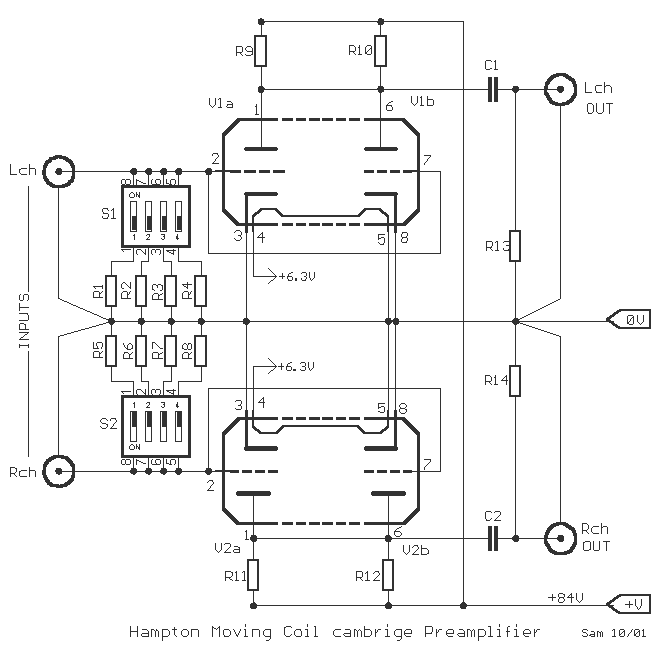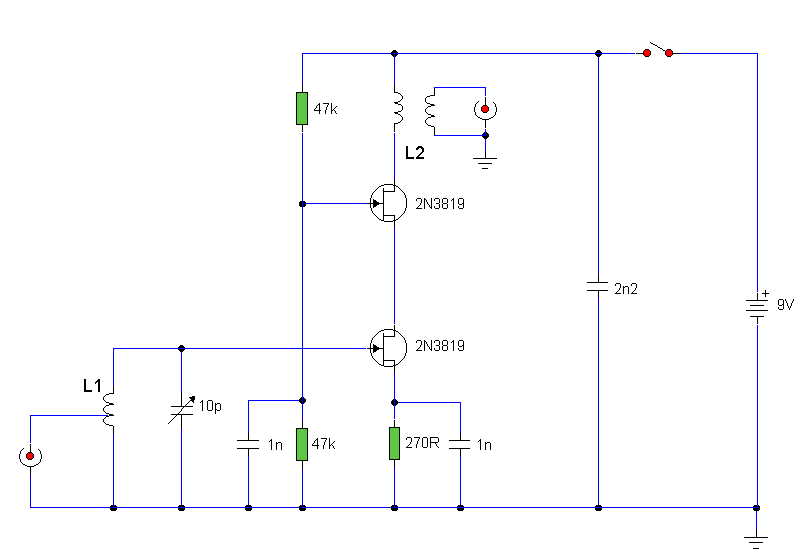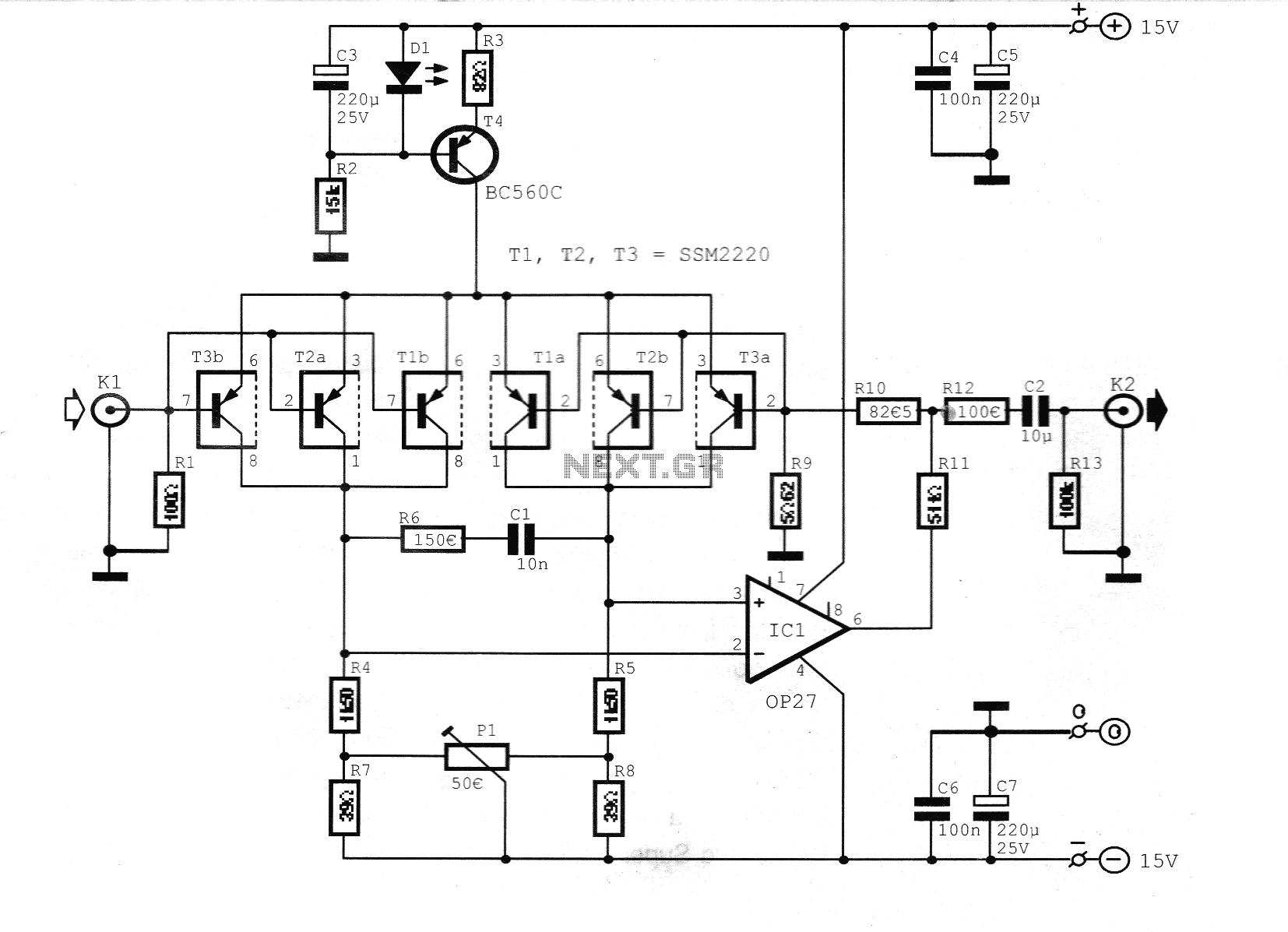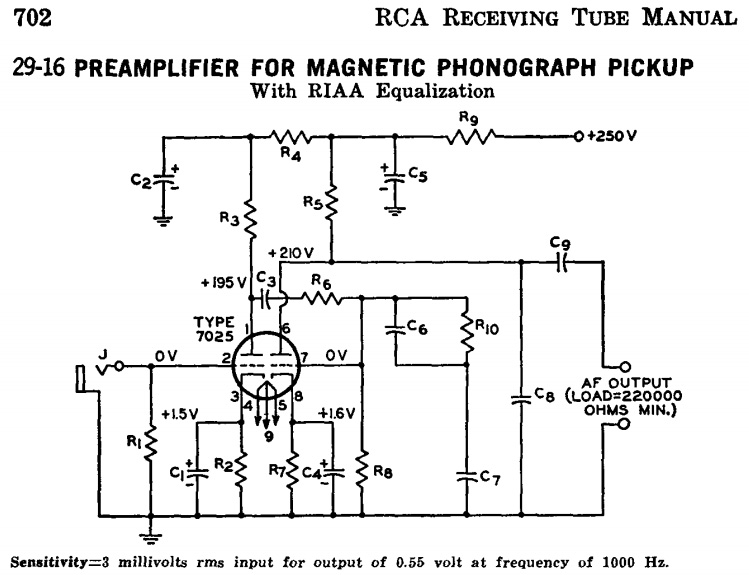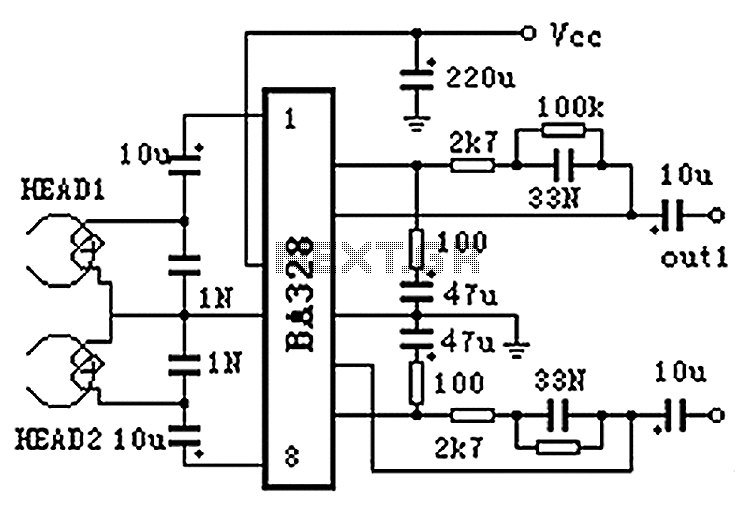
Modular Phono Preamplifier

Any electronics amateur possessing a collection of vinyl recordings and seeking high-quality reproduction should construct this preamp and integrate it into the Modular Preamplifier chain. This circuit offers a very high input overload capability, low distortion, and precise reproduction of the RIAA equalization curve, achieved through a two-stage op-amp configuration. The RIAA equalization network is divided into two sections: an input stage (IC1A) configured in a series feedback arrangement, which implements the bass-boost portion of the RIAA equalization curve, and a second stage that addresses the treble-cut portion using another op-amp (IC2A) configured in shunt feedback. This module also includes an independent dual rail power supply, identical to that used in the Modular Preamplifier Control Center. Like the other modules in this series, each electronic board can be housed in a standard enclosure; Hammond extruded aluminum cases are particularly suitable for this preamp. Specifically, cases measuring 16 x 10.3 x 5.3 cm or 22 x 10.3 x 5.3 cm provide an aesthetically pleasing appearance when stacked. An example of a possible arrangement for the rear panel of this module is provided below.
The preamp circuit is designed to enhance the audio quality of vinyl playback by accurately reproducing the RIAA equalization curve, which is essential for proper sound reproduction from vinyl records. The two-stage op-amp configuration ensures that both the low-frequency and high-frequency components of the audio signal are processed effectively. The first stage, utilizing IC1A, is responsible for boosting the bass frequencies, which compensates for the natural roll-off that occurs during the vinyl cutting process. This stage is critical for delivering a rich, full sound that vinyl enthusiasts appreciate.
The second stage, implemented with IC2A, focuses on attenuating the treble frequencies, ensuring that the high-frequency response remains balanced and does not introduce unwanted distortion or harshness. The shunt feedback configuration of this stage allows for precise control over the treble response, further enhancing the overall fidelity of the audio output.
The dual rail power supply included in this module is crucial for providing stable and clean power to the op-amps, thereby minimizing noise and distortion. This power supply mirrors the design of the Modular Preamplifier Control Center, ensuring compatibility and reliability across the entire system.
The choice of Hammond extruded aluminum cases for housing the preamp boards not only offers protection for the sensitive electronic components but also contributes to the overall aesthetic of the audio setup. The specified dimensions allow for a compact and organized arrangement, making it easy to integrate into existing audio systems. The design encourages stacking, which is beneficial for users with limited space or those who prefer a neat, organized appearance for their audio equipment.
Overall, this preamp design is a valuable addition for any audiophile looking to enhance their vinyl listening experience, providing both technical excellence and practical usability.Any electronics amateur still in possess of a collection of vinyl recordings and aiming at a high quality reproduction should build this preamp and add it to the Modular Preamplifier chain. This circuit features a very high input overload capability, very low distortion and accurate reproduction of the RIAA equalization curve, thanks to a two-stag
e op-amp circuitry in which the RIAA equalization network was split in two halves: an input stage (IC1A) wired in a series feedback configuration, implementing the bass-boost part of the RIAA equalization curve and a second stage, implementing the treble-cut part of the curve by means of a second op-amp (IC2A) wired in the shunt feedback configuration. This module comprises also an independent dual rail power supply identical to that described in the Modular Preamplifier Control Center.
As with the other modules of this series, each electronic board can be fitted into a standard enclosure: Hammond extruded aluminum cases are well suited to host the boards of this preamp. In particular, the cases sized 16 x 10. 3 x 5. 3 cm or 22 x 10. 3 x 5. 3 cm have a very good look when stacked. See below an example of the possible arrangement of the rear panel of this module. 🔗 External reference
The preamp circuit is designed to enhance the audio quality of vinyl playback by accurately reproducing the RIAA equalization curve, which is essential for proper sound reproduction from vinyl records. The two-stage op-amp configuration ensures that both the low-frequency and high-frequency components of the audio signal are processed effectively. The first stage, utilizing IC1A, is responsible for boosting the bass frequencies, which compensates for the natural roll-off that occurs during the vinyl cutting process. This stage is critical for delivering a rich, full sound that vinyl enthusiasts appreciate.
The second stage, implemented with IC2A, focuses on attenuating the treble frequencies, ensuring that the high-frequency response remains balanced and does not introduce unwanted distortion or harshness. The shunt feedback configuration of this stage allows for precise control over the treble response, further enhancing the overall fidelity of the audio output.
The dual rail power supply included in this module is crucial for providing stable and clean power to the op-amps, thereby minimizing noise and distortion. This power supply mirrors the design of the Modular Preamplifier Control Center, ensuring compatibility and reliability across the entire system.
The choice of Hammond extruded aluminum cases for housing the preamp boards not only offers protection for the sensitive electronic components but also contributes to the overall aesthetic of the audio setup. The specified dimensions allow for a compact and organized arrangement, making it easy to integrate into existing audio systems. The design encourages stacking, which is beneficial for users with limited space or those who prefer a neat, organized appearance for their audio equipment.
Overall, this preamp design is a valuable addition for any audiophile looking to enhance their vinyl listening experience, providing both technical excellence and practical usability.Any electronics amateur still in possess of a collection of vinyl recordings and aiming at a high quality reproduction should build this preamp and add it to the Modular Preamplifier chain. This circuit features a very high input overload capability, very low distortion and accurate reproduction of the RIAA equalization curve, thanks to a two-stag
e op-amp circuitry in which the RIAA equalization network was split in two halves: an input stage (IC1A) wired in a series feedback configuration, implementing the bass-boost part of the RIAA equalization curve and a second stage, implementing the treble-cut part of the curve by means of a second op-amp (IC2A) wired in the shunt feedback configuration. This module comprises also an independent dual rail power supply identical to that described in the Modular Preamplifier Control Center.
As with the other modules of this series, each electronic board can be fitted into a standard enclosure: Hammond extruded aluminum cases are well suited to host the boards of this preamp. In particular, the cases sized 16 x 10. 3 x 5. 3 cm or 22 x 10. 3 x 5. 3 cm have a very good look when stacked. See below an example of the possible arrangement of the rear panel of this module. 🔗 External reference
